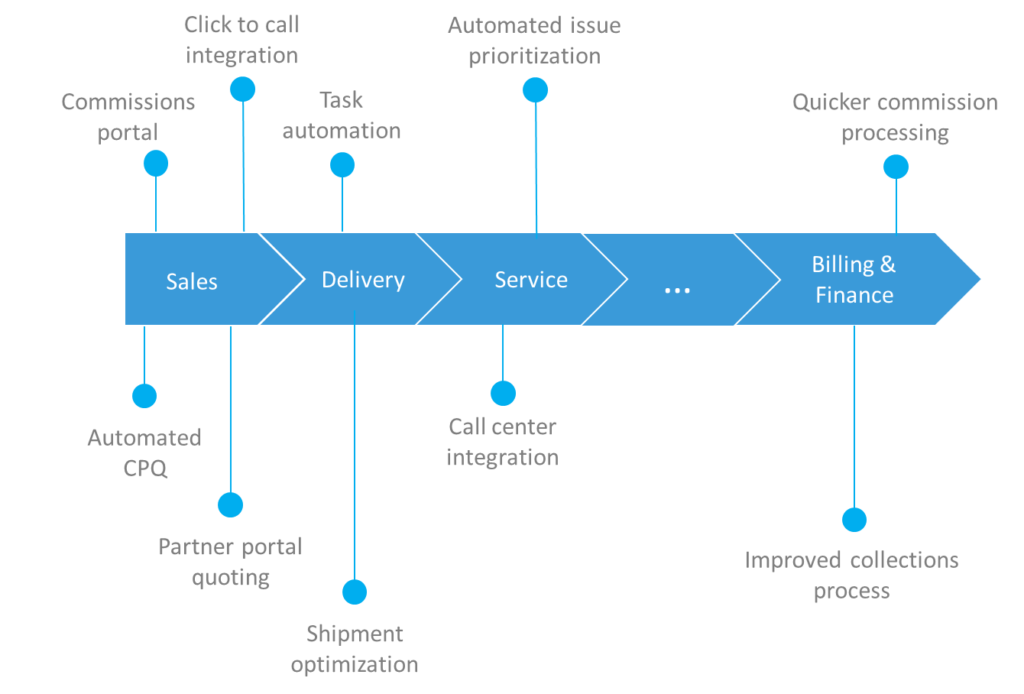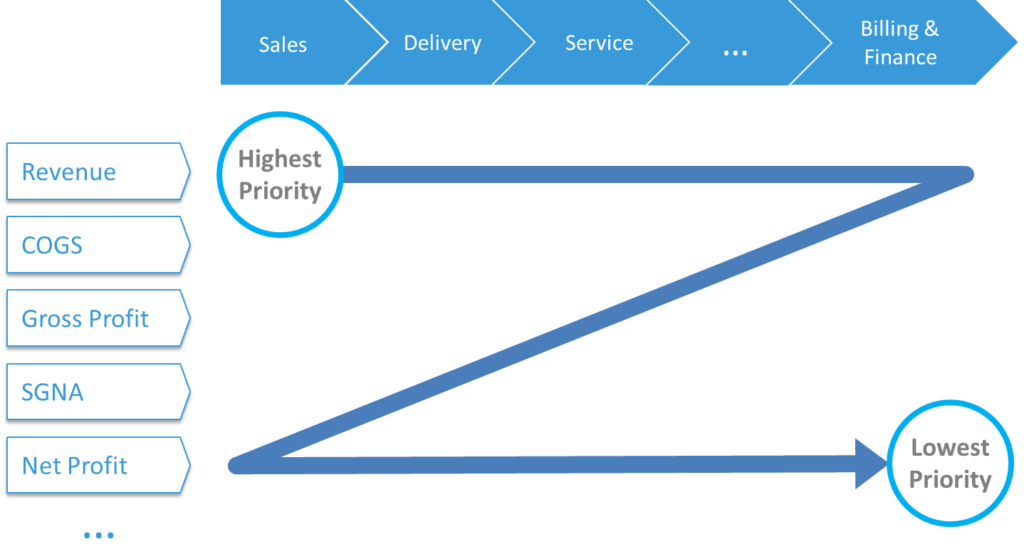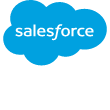How to establish Quote-to-Cash optimization priorities?

Quote-to-Cash optimization is a continuous process helping organizations to grow and stay ahead of their competition.
The optimization process is usually broken into a number of projects. Individual projects focus on addressing inefficiencies and bottlenecks in specific business areas such as sales, customer support, billing, etc.
Quote-to-Cash optimizations may include:
- Rapid quote generation by using a CPQ tool to reduce workload on the quoting team
- Click to call and automated call logging by integrating Salesforce with VoIP telephony, so sales reps can make more calls
- Adding more information to account screens in Salesforce so account managers can find information faster
- Automated order placement with vendors to reduce error rate and manual effort
- Shortening call center answer time for better customer experience, e.g., by adding data to Salesforce object layouts reducing amount of time that takes support team to look for information while on customer calls
- Improved employee task performance measurements / incentives making sure that their time is spent effectively
- and many others

Optimizations can result from better systems (e.g., adding CPQ to a Salesforce instance), processes (division of labor, efficiency gains) or governance (tracking, reporting, incentives).
Since not everything can be done at once, prioritization comes into play.
Organizations employ various methods to assess project impacts (ROI, spent, payback, customer satisfaction, employee satisfaction), but sometimes hard numbers are difficult to obtain (arbitrary weights in formulas, uncertainty, intangible factors like customer experience).
To help customers prioritize their initiatives we’ve come up with what we call the Z-Model. The model is a two-dimensional matrix based on Quote-to-Cash process flow and income statement:

The X axis follows organization’s Quote-to-Cash flow (left to right), e.g.:
Sales → Delivery → Support → Billing → Finance
The Y axis follows a simplified income statement (top-down):
- Revenue
- COGS
- Gross Profit/Margin
- SGNA
- Net Profit/Margin
The general idea is that impact/importance usually follows Z-order like shown above.
Looking from left to right the rationale is that there’s no sense optimizing delivery or customer support when sales does not generate enough load for them.
From top to bottom, the first concern is revenue in a sense that improving margins is secondary to growth (need to have revenue to work on margins).
Of course, there might be other considerations like cash flow which is not included in the diagram (as it cannot be derived from the income statement). In that case it might be placed on Y-axis in the order of importance.
Conclusions
The Z-Model is a useful tool for determining (or validating) Quote-to-Cash optimization priorities. The one presented in this post is very simple for easy explanation — for real-life organizations it can (and should be) contain more detail. This pertains both to process (e.g., delivery may be broken into packaging and shipping) and business priorities (e.g., cash flow more important than revenue).
Nextian is a vendor of Quote-to-Cash (QTC) software for cloud and communications helping providers accelerate growth and increase customer lifetime value.
Contact us today to find out how we can help you!
Related posts
2024 telecommunications industry trends in quote-to-cash
Learn about 2024 telecommunications industry trends: shift towards software, digital experience, automation, API-fication and AI & algorithms.
Taking telco service delivery to the next level
Take your telco service delivery to the next level with task automation, intelligent task assignments, automated scheduling and forecasting and others.
Increasing sales velocity for cloud & communications services
Increase sales velocity of cloud and communications services and quickly generate revenue with rapid quoting, automated renewals and omni-channel sales.
GET THE NEXTIAN ADVANTAGE
We help enterprises increase revenue, profitability and gain efficiencies by realizing the full potential of the Salesforce platform.




